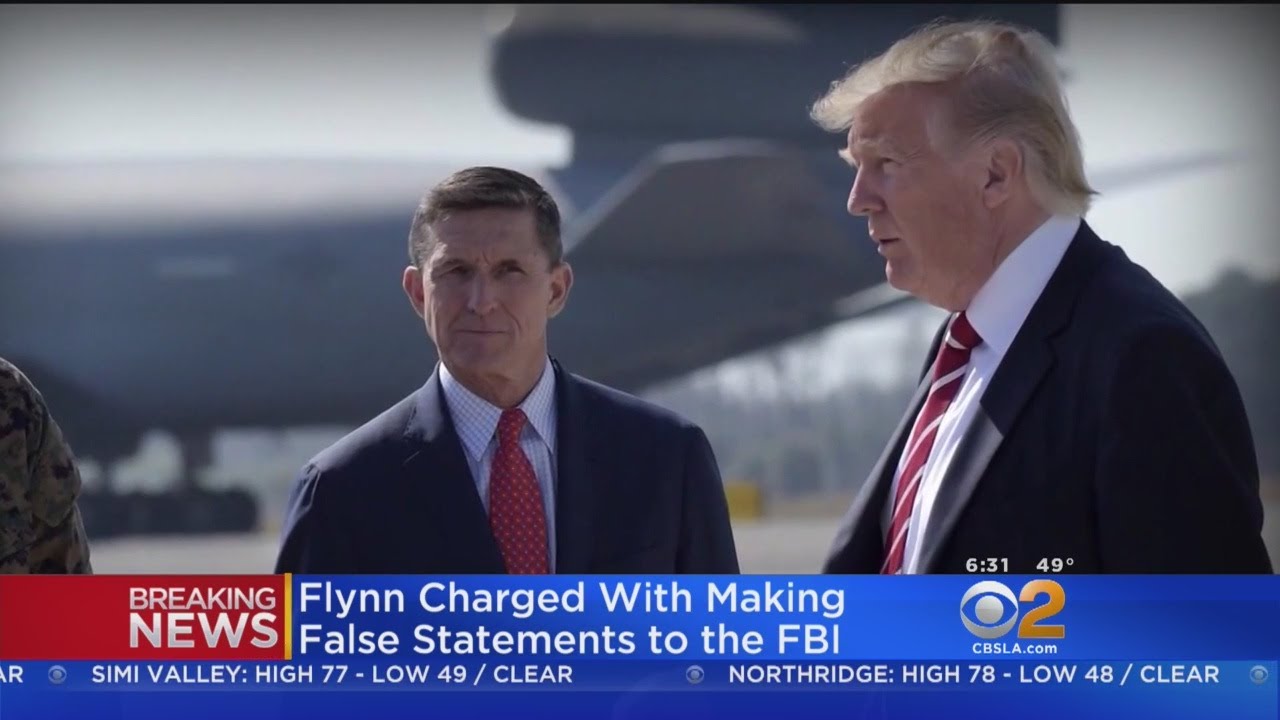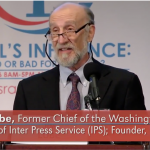by Jim Lobe
Except for the ongoing war in Syria, coverage of the Middle East by the evening news programs of the three big U.S. networks virtually disappeared in 2017, according to the latest annual compilation by the authoritative Tyndall Report.
Russia and Russian-related events—as in the allegations of Moscow’s meddling in U.S. elections—ranked as the top story of the year, while North Korean’s nuclear program ranked number 3 in all stories, foreign and domestic, according to the Report. The Syria story ranked number 14. Remarkably, neither enhanced tensions between the U.S. and Iran nor the radical shift in U.S. policy toward the Israel-Palestine conflict, including Trump’s recognition of Jerusalem as Israel’s capital, made it anywhere near the top stories for the year.
I’ve long paid close attention to Andrew Tyndall’s annual reports because I think they offer key insights into how many, if not most, Americans see the world, or at least the world that network news offers them. For 30 years now, Tyndall has been carefully compiling the content of the weeknight evening news shows of ABC, CBS, and NBC, whose combined audience averages about 20 million viewers.
Although that doesn’t seem like a huge number, network news is still probably the biggest single source of national and international news consumed by the American public. It is still well more than the number of people who watch cable news, even if the latter provides more intensive and extensive coverage of national and international events. Because of the size and influence of its major sponsors (compared to cable news advertisers), network news has always been designed to appeal to the greatest number of viewers, just as daily metropolitan newspapers dropped their partisan leanings back in the late 1800s in order to appeal to mass audiences with a wide variety of backgrounds, political tendencies, and worldviews. In important ways, the network news agenda—as shallow, superficial, and sensationalistic as it is—says a lot about how Americans see and understand events and trends beyond their immediate experience.
Last year, the three networks devoted a total of 14,320 minutes of actual news coverage in their evening news shows (or a little more than 20 minutes per half-hour program). Of that total just about half had a domestic dateline other than Washington DC. Some 4,200 minutes had a Washington DC dateline – which could be national or international news. And a mere 1,124 minutes, or less than eight percent, were reported from a foreign dateline. Is it any wonder that much of the U.S. population sees the United States as the center of the world, if not the universe?
Top Story
The top single story, according to Tyndall’s typology, was the probe over “Russian election meddling,” clocking in at 677 minutes for the three networks combined—more than half of all the minutes they devoted to stories from foreign countries. But several related stories that Tyndall considers as distinct, were also related to U.S.-Russian elections. Thus, the fifth biggest story (241 mins) was the firing of former FBI director James Comey, and the tenth biggest story was the ouster of former National Security Adviser Michel Flynn (186 mins). Add to that the “Trump Tower wiretapping claim” (130 mins) and “Russia-US diplomacy, frictions” (123 mins) and that’s a grand total of 1,357 minutes devoted to Russia-related coverage: almost 10% of all national and international news coverage.
The second biggest story of the year was the debate over replacing or repealing Obamacare at 444 minutes, followed by North Korea’s nuclear program at 300 minutes. The only other foreign-related stories in the top 20, however, were the travel ban and related visa restrictions (number 12 with 169 mins), the Syria war (160 mins), and the “illegal immigration crackdown” (number 16, with 134 mins.).
Apart from those, there were a lot of weather-related stories among the top 20, although, remarkably, none involved places further away from the U.S. than, say, Antigua and Barbuda. The coverage thus missed historic droughts and other extreme weather around the globe, which would have facilitated linking these relatively local events to planetary meteorological and climatological trends a la climate change. Hurricane Harvey in Texas was the fourth-ranked story (272 mins), Hurricane Irma in the Virgin Islands and Florida (number 6 at 216 mins), the California wildfires (number 8 at 199 mins), the far more devastating Hurricane Maria in Puerto Rico and the Caribbean (number 9 at 191 mins), and “winter weather” (162 mins) yielded a 1,040-minute total.
You’d think that news producers would look at that those numbers and conclude that climate change—treated as a global phenomenon and not just as a series of freak events—really is a national-security story that deserves more constant and consistent attention, not just here in the U.S., but around the world. But of course that might prove too controversial for 30% of the audience.
Foreign Policy Top Ten
Tyndall has compiled a useful summary complete with a bar graph here. Here’s the top ten line-up:
- Russia-U.S. espionage: election interference probe (363 mins)
- North Korea nuclear weapons, missile program (181 mins)
- Travel visas, refugee asylum, immigration restricted (153 mins)
- Russia-US diplomacy, frictions, sanctions (113 mins)
- Syrian civil war: regime suppresses rebellions (106 mins)
- Afghanistan’s Taliban regime aftermath, fighting (73 mins)
- ICE-CBP controls along Mexico line: wall proposed (60 mins)
- Niger-US military cooperation; Green Berets killed (56 mins)
- President Trump foreign travel (52 mins)
- NSC Advisor Michael Flynn ousted, investigated (44 mins)
Again, please notice that the Middle East, aside from Syria, has all but disappeared, unless one includes Afghanistan as part of the region and Trump’s trip to Riyadh as part of his foreign travel. This is remarkable in itself given Washington’s almost-total preoccupation of the previous 16 years. Iraq, the Islamic State, the Syrian civil war, and Iran’s “malign” activities were all in the top ten in 2016 (when total foreign policy coverage dipped to the lowest point since Tyndall began his work 30 years ago. But what’s really remarkable is that Iran’s nuclear program was the biggest foreign-policy story by a fair margin in 2015, and Teheran virtually disappeared from the national network news scene just two years later. For the record, Iran got 32 minutes of coverage in 2017, almost all of it devoted to the monitoring of the nuclear deal and Trump’s unfounded attacks on it. That was just behind coverage of the collisions by U.S. Navy vessels in the Pacific (33 minutes)
As for Israel-Palestine and U.S. recognition of Jerusalem as Israel’s capital, it ranked No. 11 on Tyndall’s foreign policy list, at 42 minutes, confirming that the American public—at least insofar as the network news rated its interest—doesn’t care a great deal about the issue anymore.






I would really like to know who makes the decisions about what is news at the networks. That the election story leads the way is telling all by itself. It is like there was a group decision about what we need to watch every day. Anybody care to name some names.
The US media is obsessed with the king Trump and ignores the rest of the world! The so called news on tv isn’t worth of wasting time on it!
Hate to say this,Once evening three network news had been competing for profit after abandoning fairness doctrine,It has been downhill run.and Mr.Trump understood better than Mrs.Clinton and resulting outcome is present POTUS.